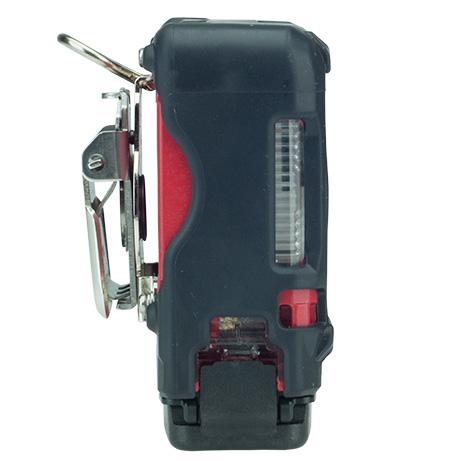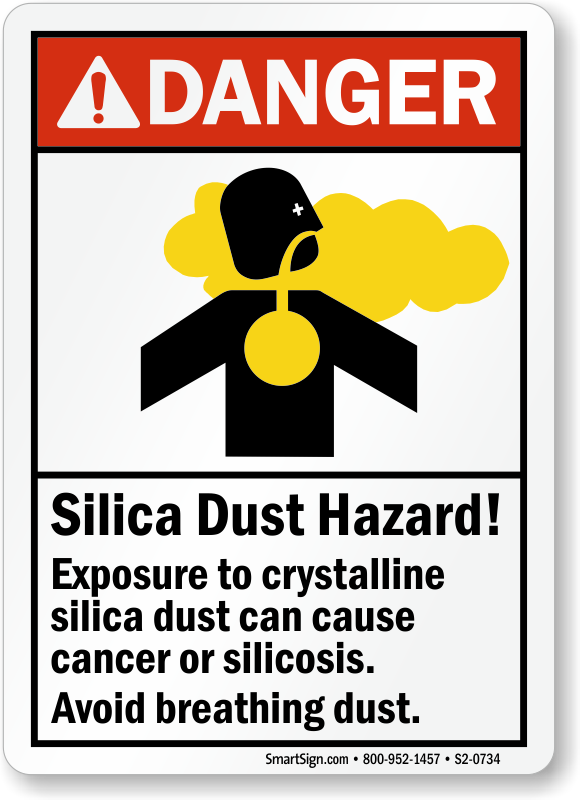

Personal Hydrogen Sulfide (HS) Monitor - A sensor worn within 18 inches of the nose on the outside of the clothing equipped with a visual read out and audible and vibration alarms that continuously measures HS levels in the air space around the wearer. Wearing an H2S “Clip” or “Badge” at these facilities is as routine as wearing a hardhat and eye protection. Because of the poor warning properties, extreme toxicity, and pervasiveness of this hazard, at many oil production sites and refineries every worker is required to wear a personal gas detector for H2S at all times while they are on site. A single breath at a concentration of 1,000 PPM results in immediate loss of consciousness, followed by cardiac arrest and death unless the unconscious individual is successfully revived. In industries where hydrogen sulfide exposure is commonplace, for example oil field work, employees often refer to this phenomenon as “knockdown”. If exposure is very brief, for example, transitory envelopment by a passing gas cloud, the victim may awaken promptly and experience no adverse effects at all. At air concentrations of about 750 PPM, inhalation of hydrogen sulfide gas can cause immediate collapse and unconsciousness. For most persons, a concentration of 150 PPM is enough to immediately deaden the sense of smell. At higher concentrations, H2S rapidly deadens the sense of smell. Hydrogen sulfide (H2S) is a colorless gas that at low concentrations famously has an odor similar to rotten eggs.

ACGIH Short Term Exposure Limit (STEL): 15 ppm.ACGIH Threshold Limit Value (TLV): 10 ppm.OSHA Acceptable Ceiling Concentration: 20 ppm Detection by odor is unreliable since it rapidly deadens the sense of smell. Hydrogen Sulfide (HS) - A flammable, toxic, colorless and corrosive sulfur based gas recognizable by its rotten egg odor.The accident occurred at an oil-drilling site characterized by the potential presence of hydrogen sulfide. Failure to surveil and enforce proper use of gas detectors that had been issued to workers was one of the root causes of the Canadian accident. A critical part of safety programs that include use of gas detectors are the procedures used to verify that the instruments are being used properly. In order to protect workers, the instruments have to be used correctly. A recent toxic gas fatality in Canada illustrates that buying gas detectors for workers does not automatically ensure worker safety. I have seen them on pant pockets, to hard hat, the proper location of a H2S Monitor for heaven’s sake is in the breath zone! AND ON THE VERY OUTSIDE OF YOUR CLOTHES!Įquipping workers with personal gas detectors is similar to equipping cars with seatbelts: they can only protect workers if they are used properly and consistently.


This can pose risks when entering areas where the gas may be present. Because H2S is heavier than air, it may settle in low spots.


 0 kommentar(er)
0 kommentar(er)
